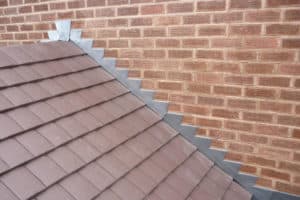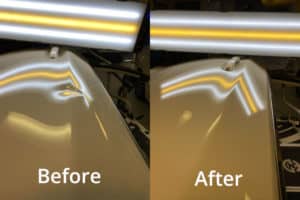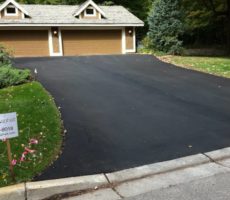There are many surfaces to park your RV, and one of the options is gravel or a proper gravel parking pad. But is gravel a good option?
It’s fine to park an RV on gravel as long as the gravel drains properly so the tires aren’t exposed to water for extended periods, which can cause tire rot. If the gravel surface tends to have puddles, you can use rubber or wood mats to elevate the tires and prevent water damage.
When parking on gravel, ensure the surface is level and stable to prevent tire punctures and damage to the RV’s undercarriage. Additionally, consider putting down a barrier, such as a tarp or mats, to protect the RV from gravel-related damage.
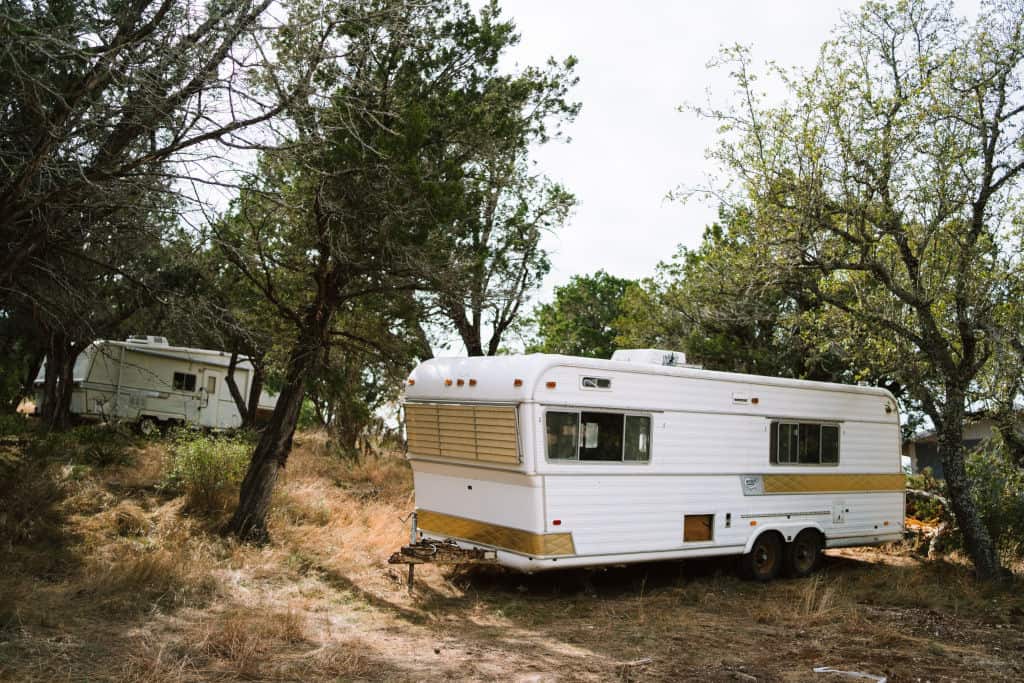
Is Parking on Gravel Bad for RV Tires?
Parking on gravel, when it is a traditional stone or crushed rock, should not harm your RV tires as long as the surface is compacted and drained of water.
To ensure that your tires stay in good condition, ensure they are properly inflated and avoid prolonged or high-temperature storage. This can help to prevent dry rot in the tires.
If you are concerned about the impact of gravel on your RV tires, you can use rubber mats or wood under the tires for extra protection. However, it’s important to ensure that these materials do not hold water and cause the tires to sit in a puddle, as this can be harmful.
In general, as long as the gravel surface is level, stable, and drained of water, there is no reason to believe parking your RV on gravel will cause damage to your tires. However, if you are in any doubt, it may be wise to consult a professional or seek the advice of an RV dealership.
Things to Keep in Mind When Parking RV on Gravel
When you park the RV, you may want to keep these things in mind:
- Close windows, remove batteries and propane tanks and lock the RV.
- Putting down jacks is optional but usually not necessary if not inside the RV.
- Gravel or concrete is fine for parking but avoid grass and weeds.
- Consider paying to store the RV in a gated, protected gravel parking lot.
- The cost of parking on a fenced gravel pad is around $75 to $125 per month.
- Ensure the gravel surface is level and stable.
- Prevent tire damage by keeping gravel free of sharp rocks and debris and using tire covers or barriers like tarps or mats.
- Protect the undercarriage by regularly cleaning, checking for damage, and promptly addressing any damage.

Can You Store Your RV on Gravel for Longer Time?
Storing RVs on gravel for longer times should be fine, as long as the tires aren’t sitting in a puddle and the soil underneath is properly compacted. It’s advisable to place the tires on the blocks to remove the weight on them.
If the RV remains on tires, it’s a good idea to move it every few months, so it sits in another position on the tire.
If it’s outside, and the area gets a lot of rain, then it’s important to ensure there aren’t any puddles underneath your tires. Rain can cause erosion under the gravel, so it’s important to make the water properly drain. You can put larger rocks on the lower parts to help with this.
While parking your RV beneath trees shields it from the sun, it can lead to a buildup of tree debris on the gravel pad. To mitigate this, consider installing a simple overhead tarp or RV canopy to catch the bulk of the debris, making maintenance easier. Regular sweeping or raking of the gravel can also prevent organic matter from embedding and affecting drainage.
To stabilize the gravel, you can put a geotextile layer underneath. Road cloth placed underneath will stabilize and separate gravel properly, which is usually the best choice.
How Do You Make a Parking Pad for an RV?
Anyone can do RV parking pad construction, which is not that complicated. Here’s the easiest way to create your own gravel parking pad:
- Rent a sod cutter and peel the top 2 inches of grass and soil away. Roll it up and either dispose of it or use it somewhere else.
- Buy landscape fabric/weed barrier and roll it out in the same place
- Find a place in your local area where you can buy some ⅝” of clean crushed rock, and have them deliver it to your house and lay it down at the spot.
- Then simply rake it out, and that’s it. You can put a border out of bricks or plastic/metal strips to keep the grass on one side and the rock in order.
You can further stabilize your parking pad. Similar to creating a parking pad for your car, you may want to dig deeper to 5-6” and place the larger crushed rock down as a base. This will reduce mud and runoff and save you money.
To fully stabilize your parking pad, use a geotextile layer underneath, which you will top with gravel. This material is similar to road cloth but more robust and designed for driveways and roadways.
Here’s a video on making your own RV parking pad:
How Much Does It Cost for a Gravel RV Pad?
The total costs to create your own RV gravel pad would be about $350 to $500.
Crushed rock isn’t expensive, and ⅝” of washed crushed rock costs about $50 per cubic yard, plus a small delivery fee. Then, $100 for renting the sod cutter for a day, $50-100 for disposing of the sod/soil, and about $200 for the crushed rock.
| Item | Estimated Cost |
|---|---|
| Crushed Rock | $50 per cubic yard |
| Delivery Fee | $20-50 per cubic yard |
| Sod Cutter Rental | $100 for a day |
| Disposal of Sod/Soil | $50 to $100 |
| Total Cost | $300 to $500 |
Factor in periodic replenishing of the gravel, especially after heavy rainfall or prolonged use. Over a few years, this could add another 10-15% to your initial investment.
In regions where quarries are distant or less accessible, expect prices to surge by up to 20% due to transportation overheads.
What is the best gravel for an RV pad?
The most common type of gravel for parking in driveways, in general, is a crushed limestone of up to 1” in size, and this also applies to gravel RV pads. Crushed concrete is another good choice.
Many people also prefer pea gravel, which has nice looks, but it can create problems migrating and spreading underneath the weight of vehicles. Pea gravel must be stabilized for the long term.
In regions with more rainfall, a blend of crushed limestone with clay can offer enhanced stability, reducing the chance of your RV sinking slightly after prolonged parking.
When choosing between crushed limestone and concrete, it’s crucial to account for your region’s climate. Crushed concrete, due to its fragmented shape, tends to lock together better, making it preferable in areas prone to heavy downpours.
How thick should a gravel RV pad be?
This will depend on the ground beneath and the size of the RV. For most RVs, a 6” deep gravel pad, stabilized underneath to prevent runoff and mud, should be sufficient for both dry and rainy days.
A good way to do this is to place a geotextile layer under the gravel to prevent seepage into the ground below. It also provides a barrier layer to impede mud travels into your gravel section.
If the area gets a lot of water, it may accumulate unless you properly grade and compact it. Poorly compacted soil will cause erosion under your gravel, which can cause settling or washout.
Post-storm assessments of your pad can be crucial. Look for signs like uneven gravel surfaces or pooling water, indicators that your pad needs immediate maintenance to prevent RV tilting or potential undercarriage damage.
Gravel vs Concrete RV Pad – which is better?
The choice between a gravel or concrete RV pad depends on cost, moisture, and preference. Gravel can be a great option if properly drained and compacted and is generally cheaper than concrete. On the other hand, concrete can provide a dry and stable surface for parking but can be more expensive.
It’s important to choose a surface that is dry, compacted, and free of moisture to ensure the safety of the RV. Ultimately, the choice between a gravel or concrete RV pad is a matter of personal preference, cost, and the conditions of the parking area.
Should I Store My RV With Tires off the Ground?
Ideally, when storing RVs for a longer time, the tires should be placed on blocks to remove the weight from the tires. If you can’t do that, you should completely unload the vehicle, inflate the tires properly, and ensure that the storage surface is firm, clean, drained, and reasonably leveled.
When storing an RV in winter with the tires on the ground, avoid moving the vehicle, but make sure to move it every few months to prevent ozone cracking in the tire bulge area. This will also prevent flat-spotting. After winter, adjust the inflation before putting the vehicle back on its tires.
Here’s one way of preparing to get a gravel pad in place for an RV:
Is It Legal to Park an RV in Your Driveway?
Parking your RV in your driveway is legal in most places, but there are some restrictions to consider.
It is generally recommended not to park the RV so that it extends all the way to the sidewalk or the street and leaves enough space on the driveway to park other vehicles. In addition, parking an RV on the street in front of your house is usually against city codes and may result in a neighborhood nuisance complaint.
If neighbors do complain or the police arrive, you typically have 24 hours to move the RV. It is also important to check if there are any homeowner association (HOA) rules regarding parking an RV in your backyard, as there may be time limits for how long you can park there.
If parking at home is not an option, you can consider paying to park your RV in a secured lot in your area, which usually costs around $75 to $100 per month. This option provides a safe and secure area for your RV and peace of mind.
FAQs
What is the best surface to store an RV on?
The best surface to store an RV on is a level and stable concrete or gravel pad. It’s important to keep the surface free of sharp rocks and debris and to use tire covers or barriers such as tarps or mats to protect the tires and undercarriage of the RV.
What can you put under your RV tires when parking?
You can use rubber or wood mats to elevate the tires to prevent tire rot or damage caused by being parked in water. Using tire covers or barriers such as tarps or mats can also help prevent tire damage and prolong the lifespan of your RV’s tires.
Should you deflate tires for gravel when parking?
It is unnecessary to deflate your RV tires when parking on gravel, but some RV owners choose to do so to reduce the risk of damage to the tires and prevent them from sinking into the gravel.
Is it necessary to level the RV when storing it?
Yes, it is necessary to level the RV when storing it to prevent damage to its structure and appliances. Leveling the RV while storing it can prevent structural damage to the vehicle and ensure stability during wind and rain. The frame of an RV can twist if it is just unlevel in one corner.
Should you place blocks behind stabilizer jacks?
Placing blocks behind stabilizer jacks is recommended for extra support and to and prevent the RV from shifting or sinking into the ground.
Do RV tires rot when stored?
RV tires can rot when stored for an extended period of time due to exposure to the elements and lack of usage, leading to rubber deterioration. When storing your RV for longer than three months, you should consider jacking it up.
Is it better to store the RV with slides in or out?
It’s better to store the RV with slides in, as this protects the seals and minimizes the risk of water damage or leaks. To keep undesirable moisture out of your RV and belongings, store it with the slides in.


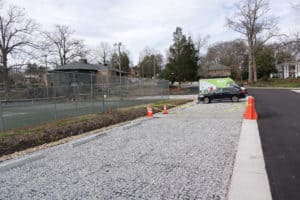

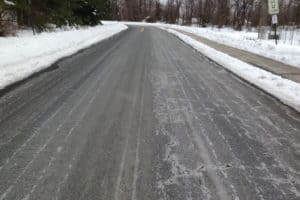
![How Much Do Shipping Containers Cost? [Full Guide] Shipping Container retail shop (cost)](https://howmonk.com/wp-content/uploads/2020/03/Shipping-Container-retail-shop-300x200.jpg)
